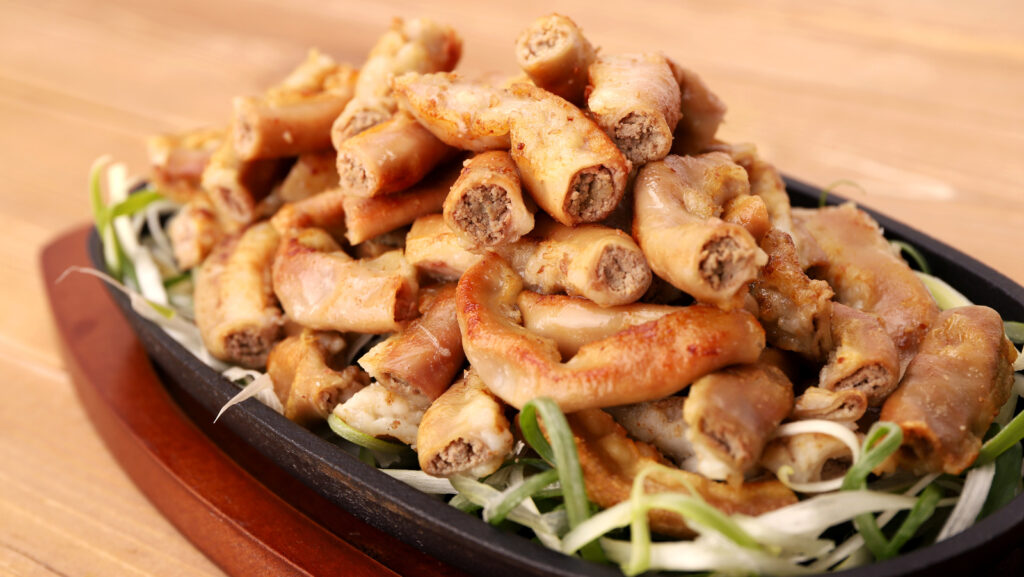What is Tripa?
Tripa is a term that can refer to different concepts depending on the context in which it is used. In general, it is most commonly associated with the culinary term for the edible lining of the stomachs of various animals, particularly in the context of traditional dishes in many cultures. Additionally, the term has meanings in different languages, notably in Portuguese and Spanish, where it translates to “intestine” or “gut.” This article will explore the various meanings and uses of the term “tripa,” its culinary significance, cultural importance, and provide an FAQ section to address common inquiries.
Culinary Significance of Tripa
Tripa, in the culinary context, refers to tripe, which is the edible lining of the stomachs of ruminant animals such as cows, sheep, and goats. Tripe is a delicacy in many cuisines around the world, particularly in European, Asian, and Latin American dishes. It is known for its unique texture and ability to absorb flavors from the ingredients it is cooked with.
Types of Tripe
There are several types of tripe, categorized based on the part of the stomach from which they are derived:
- Honeycomb Tripe: This type comes from the second stomach of cattle, known as the reticulum. It has a honeycomb-like appearance and is prized for its texture.
- Flat Tripe: Sourced from the first stomach (rumen) of cattle, flat tripe is less textured than honeycomb tripe and is often used in soups and stews.
- Green Tripe: This is the unprocessed form of tripe that has not been cleaned. It retains a strong odor and is often used in pet food or as a specialty ingredient in some dishes.
- Veal Tripe: Sourced from young calves, veal tripe is considered more tender and milder in flavor compared to beef tripe.
Preparation and Cooking Methods
Tripe can be prepared in various ways, depending on the cultural context. Common cooking methods include:
- Boiling: Often the first step in preparing tripe, boiling helps to tenderize the meat and remove impurities.
- Braised: Tripe can be braised with spices, vegetables, and broth for several hours to develop rich flavors.
- Grilled or Fried: In some cuisines, tripe is marinated and then grilled or fried until crispy.
- In Soups and Stews: Tripe is a popular ingredient in hearty soups and stews, where it absorbs the flavors of the broth and other ingredients.
Cultural Importance
Tripa is not just a food item; it holds cultural significance in many regions. In countries like Mexico, tripe is used in traditional dishes such as Menudo, a spicy soup that is often served at celebrations and family gatherings. In Italy, Trippa alla Romana is a popular dish featuring tripe cooked in a tomato sauce with herbs and spices.In Asian cuisines, tripe is often featured in dishes like Pho, a Vietnamese noodle soup, and Dim Sum, where it may be served in various forms. The preparation and enjoyment of tripe reflect cultural traditions and culinary heritage, making it an important ingredient in many households.
Nutritional Value
Tripe is a source of protein and contains several essential nutrients. It is low in fat and calories compared to other meat cuts, making it a healthier option for those looking to reduce their fat intake. However, the nutritional value can vary based on the cooking method and accompanying ingredients.
Tripa in Language
The term “tripa” has linguistic significance as well. In Portuguese and Spanish, “tripa” translates to “intestine” or “gut.” This anatomical meaning is often used in medical contexts or discussions about animal anatomy. Additionally, idiomatic expressions involving “tripa” can convey various meanings in colloquial language.
Tripa in Different Cultures
- Latin America: In many Latin American countries, tripe is a staple ingredient in traditional dishes. It is often used in soups and stews, showcasing the cultural significance of this ingredient in family meals.
- Asia: In Asian cuisines, tripe is celebrated for its texture and ability to absorb flavors. It is often found in noodle soups and stir-fries, highlighting its versatility.
- Europe: Tripe has a long history in European cuisine, particularly in countries like Italy, France, and Spain, where it is featured in various traditional dishes.
Frequently Asked Questions (FAQ)
1. What is tripa?
Tripa refers to the edible lining of the stomachs of ruminant animals, commonly known as tripe. It is used in various culinary dishes around the world.
2. Is tripa healthy to eat?
Yes, tripa is a source of protein and is low in fat and calories compared to other meat cuts. However, its nutritional value can vary based on preparation methods.
3. How is tripa prepared in cooking?
Tripa can be boiled, braised, grilled, or fried. It is often used in soups and stews, absorbing the flavors of the broth and other ingredients.
4. What are some popular dishes that use tripa?
Popular dishes that use tripa include Menudo (Mexico), Trippa alla Romana (Italy), and Pho (Vietnam).
5. What does “tripa” mean in other languages?
In Portuguese and Spanish, “tripa” translates to “intestine” or “gut,” and it is often used in both culinary and anatomical contexts.
Additional Information
| Fact | Source |
|---|---|
| Tripe is a delicacy in many cultures, including Mexican, Italian, and Vietnamese cuisines. | Wikipedia – Tripe |
| Tripe is low in fat and calories, making it a healthier meat option. | Healthline |
| Common types of tripe include honeycomb, flat, green, and veal tripe. | Wikipedia – Tripe |
Conclusion
Tripa, or tripe, is a versatile ingredient with a rich culinary history and cultural significance. Its unique texture and ability to absorb flavors make it a favorite in many traditional dishes around the world. Whether enjoyed in a hearty soup or as part of a celebratory meal, tripa continues to be a cherished component of various cuisines, reflecting the diverse ways in which food connects people and cultures.



